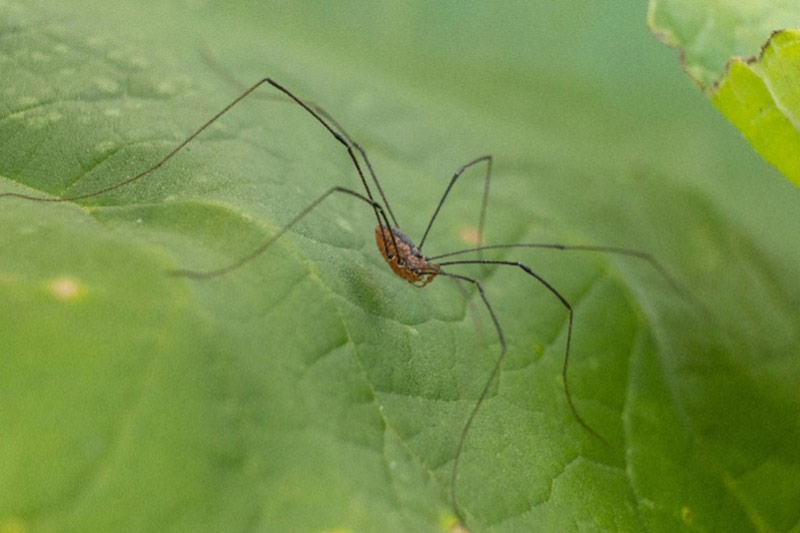By Linda Conlin, Pro to Pro Managing Editor
Daddy Longlegs, also known as Harvestmen, were long thought to be an exception to most arachnids, which have multiple eyes, in that they have only two. But according to a recent paper published in Current Biology, researchers at the University of Wisconsin-Madison, discovered four more vestigial eyes. They believe that the eyes may have been fully functional at one time, but no longer develop fully. (https://www.nytimes.com/2024/03/01/science/daddy-long-legs-eyes.html)
The Daddy Longlegs is an arachnid, but not a spider, although there’s a close resemblance. (They also can’t make silk for spinning webs.) It’s a little confusing, but all spiders are arachnids, although not all arachnids are spiders. Arachnids include scorpions, mites, ticks, and even horseshoe crabs, and many have multiple eyes. Of the two eyes previously known for Daddy Longlegs, one looks left, and the other to the right.
The additional eyes were identified by locating opsins, light sensitive proteins that bind to light-reactive chemicals to underlie vision in animals and humans. Researchers used fluorescent tags that attach to opsins and identified those locations. They then matched those locations, two of which are above leg joints, to the additional eyes on spiders (8 eyes) and horseshoe crabs (10 eyes). Some of the oldest known fossils of Harvestmen seem to have two full pairs of eyes. This discovery may help link the fossils, which are thought to be more than 400 million years old, more directly with their descendants, and indicates that they have changed very little over the course of evolution.
There are no lenses associated with the areas of the opsins to focus light. But perhaps these patches of tissue are still sensitive to light, the researchers say. They might be able to help detect the difference between darkness and light, which is helpful in that Harvestmen prefer moist, dark places. The primary eyes act as light sensors and do not appear to provide more than blurry images; however, they are most receptive the light emitted by the glowworms that make up their diet.
This study highlights the sometimes unintended discoveries in research. Dr. Guilherme Gainett and his co-authors intended to find out why Daddy Longlegs evolved from the two pairs of eyes found in fossils to only the single pair that was previously identified. Were the additional eyes no longer needed and if so, why? Instead, they discovered quite the opposite. There were more eyes than even were identified in the fossils.












